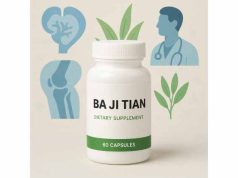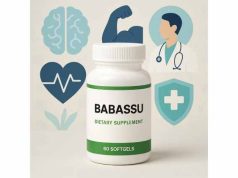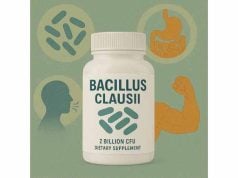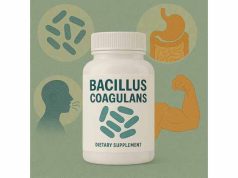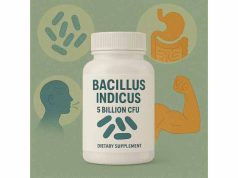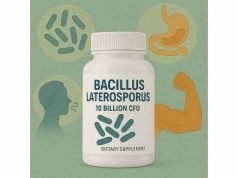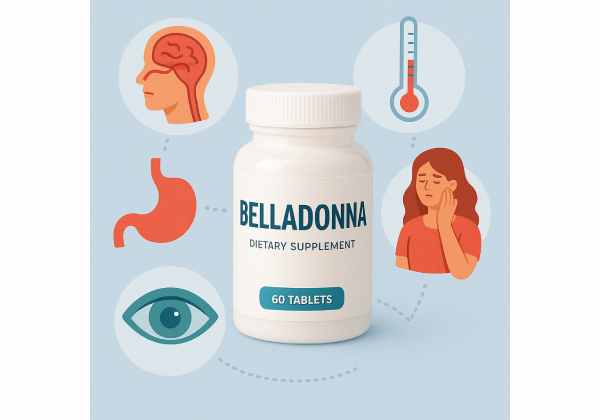
Is it true that a beautiful flowering plant called “belladonna” was once used as both a deadly poison and a beauty secret? This infamous herb, also known as deadly nightshade, has a fascinating history and a complex reputation—one that spans ancient medicine, modern pharmacology, and plenty of myths. Today, belladonna is still found in select herbal remedies and prescription drugs, but its powerful effects mean careful handling is essential. In this comprehensive guide, we’ll unravel what belladonna is, how it works, its proven and claimed benefits, usage guidance, dosage, safety concerns, and the most-asked questions for those considering this potent botanical.
Key Takeaways
- Belladonna is a highly potent plant with both medicinal uses and notable risks; it contains natural alkaloids that strongly affect the nervous system.
- Historically, it was used for pain, muscle spasms, and eye dilation, but modern use focuses on carefully controlled pharmaceutical extracts.
- Improper use can cause severe side effects, including toxicity and even death—professional guidance is critical.
- Dosage and form (homeopathic vs. prescription vs. herbal) make a major difference in safety and efficacy.
- Belladonna is not safe for self-experimentation; consult a medical expert before considering any use.
Table of Contents
- Belladonna Overview: Identity, History, and Main Uses
- How Belladonna Affects the Body: Science and Mechanism of Action
- Belladonna Benefits: Evidence-Based and Traditional Uses
- Belladonna Safety, Side Effects, and Important Interactions
- Proper Dosage, Forms, and Best Practices for Using Belladonna
- Belladonna Frequently Asked Questions (FAQ)
Belladonna Overview: Identity, History, and Main Uses
What is Belladonna?
Belladonna (Atropa belladonna), commonly called deadly nightshade, is a perennial plant native to parts of Europe, North Africa, and Western Asia. Its name comes from Italian, meaning “beautiful lady,” referencing a time when women reportedly used its juice to dilate their pupils for a striking appearance. The plant is easily recognized by its dark purple berries, bell-shaped flowers, and lush green foliage. All parts—leaves, roots, and berries—contain potent alkaloids that impact the nervous system.
Active Compounds
The power of belladonna lies in its naturally occurring tropane alkaloids, primarily:
- Atropine: Relaxes smooth muscle, increases heart rate, and dilates pupils.
- Scopolamine: Impacts the brain and nerves, sometimes causing drowsiness or confusion.
- Hyoscyamine: Used medically to relieve intestinal spasms and other involuntary muscle issues.
These alkaloids are highly active in tiny doses and potentially deadly in larger amounts, which is why belladonna has been both valued and feared throughout history.
A Plant with a Double-Edged Past
Belladonna’s long history intertwines with both healing and harm:
- Ancient and Medieval Uses: Physicians and herbalists used belladonna for pain, sleep, asthma, and muscle cramps. It was part of “witches’ brews” and folklore due to its hallucinogenic and toxic effects.
- Cosmetic Practices: In Renaissance Italy, women used diluted juice to dilate pupils, aiming for a “doe-eyed” look—though this often damaged vision.
- Poison and Power: Belladonna was infamous as an agent of political intrigue and accidental poisoning, since even its sweet berries can be fatal if ingested by children or adults.
Modern Uses and Regulation
Today, belladonna is:
- Still cultivated for pharmaceutical alkaloid extraction (for regulated medical drugs).
- Found in very diluted form in some homeopathic products and a few traditional herbal blends.
- Used by prescription (in strictly controlled doses) to relieve muscle spasms, as a pre-anesthetic, or to treat certain eye and digestive conditions.
However, belladonna is not approved as a dietary supplement in most countries, and pure herbal products are often banned or tightly regulated due to risk of toxicity.
Forms Available
- Prescription drugs: Scopolamine patches, atropine eye drops, and GI antispasmodics.
- Homeopathic remedies: Extremely diluted forms with debated efficacy.
- Raw plant or teas: Highly discouraged outside of professional herbalist or medical supervision.
Belladonna vs. Other Nightshades
Belladonna belongs to the Solanaceae (nightshade) family, alongside tomatoes, potatoes, eggplants, and tobacco. However, only Atropa belladonna contains such potent concentrations of tropane alkaloids; the edible nightshades do not share these dangerous properties.
Summary Table: Key Properties of Belladonna
| Feature | Details |
|---|---|
| Scientific Name | Atropa belladonna |
| Main Compounds | Atropine, Scopolamine, Hyoscyamine |
| Plant Parts Used | Leaves, roots, berries (all are toxic if misused) |
| Historical Roles | Analgesic, sedative, cosmetic, poison |
| Current Uses | Prescription drugs (spasms, eye exams, anesthesia), rare homeopathic use |
| Risk Level | Extremely high—can be lethal if misused |
| Legal Status | Banned or regulated in most countries as a supplement |
Summary
Belladonna is a potent, historically important herb whose use requires significant caution and expertise. Its modern medicinal role is carefully regulated, and it is not recommended for unsupervised use.
How Belladonna Affects the Body: Science and Mechanism of Action
Belladonna’s profound effects on the human body are a direct result of its unique active compounds. Let’s explore exactly how these chemicals interact with biological systems, and why such interactions can be both therapeutic and extremely hazardous.
Key Alkaloids and Their Actions
The three primary alkaloids—atropine, scopolamine, and hyoscyamine—target the autonomic nervous system, the part of your body responsible for “automatic” functions such as heart rate, breathing, digestion, and pupil size.
- Anticholinergic Effect: All three alkaloids block acetylcholine, a neurotransmitter that enables nerves to communicate with muscles and glands. This is called an “anticholinergic” action.
- Results in the Body:
- Smooth Muscle Relaxation: Belladonna compounds can relax the muscles of the gut, bladder, and airways.
- Decreased Secretions: Saliva, sweat, digestive juices, and tears are reduced, which is sometimes useful before surgery or in conditions like peptic ulcer disease.
- Central Nervous System Effects: In low doses, scopolamine may reduce nausea or motion sickness; in higher doses, these compounds cause confusion, delirium, hallucinations, or coma.
Pharmacological Uses
- Eye Health: Atropine is used by eye doctors to dilate pupils for exams or treat inflammatory eye conditions.
- Gastrointestinal Relief: Hyoscyamine and related drugs relieve painful GI spasms in conditions like IBS or colic.
- Anti-Nausea: Scopolamine patches help prevent motion sickness and nausea.
- Anesthesia Adjunct: Atropine can prevent dangerous reflexes or secretions during surgery.
Risks of Toxicity
Because belladonna alkaloids so strongly block acetylcholine, overdose quickly leads to classic anticholinergic poisoning symptoms:
- Dry mouth and throat
- Blurred vision
- Fast heartbeat
- Fever, flushed skin
- Confusion, agitation, hallucinations
- Urinary retention or constipation
- Seizures, coma, even death
Even small accidental exposures—especially in children—can result in emergency situations.
Why Is Belladonna So Potent?
The main reason is its ability to cross the blood-brain barrier and disrupt normal neurotransmission throughout the entire body. This “broad spectrum” interference is what makes belladonna a double-edged sword in medicine and a deadly poison in misuse.
Therapeutic Index and Modern Regulation
The difference between a helpful and a harmful dose (the “therapeutic index”) is extremely narrow for belladonna, which is why pharmaceutical companies strictly control dosages in any approved medications.
- Homeopathic forms are diluted to the point where little or no active alkaloid remains, theoretically making them safer, but their actual effectiveness is highly controversial and not universally accepted in medical communities.
Interaction with Other Substances
Belladonna’s alkaloids interact with many drugs, especially those affecting the nervous system (antidepressants, antihistamines, certain antipsychotics), which can increase risk of side effects.
Summary Table: Belladonna’s Biological Effects
| Compound | Main Target | Common Medical Use | Major Risks |
|---|---|---|---|
| Atropine | Muscarinic acetylcholine receptors | Eye exams, pre-op, bradycardia | Overdose: arrhythmia, hallucination |
| Scopolamine | Brain and GI tract | Motion sickness, post-op nausea | Drowsiness, delirium, confusion |
| Hyoscyamine | GI and urinary smooth muscle | GI spasms, urinary incontinence | Dry mouth, heat intolerance, agitation |
Summary
Belladonna acts on core bodily functions via potent anticholinergic effects. This is precisely why it must be used only in tightly controlled medical situations, never as a casual supplement.
Belladonna Benefits: Evidence-Based and Traditional Uses
Belladonna’s benefits are real—but they come with significant caveats and must always be weighed against risks. Below is a detailed look at its medicinal properties, both traditional and scientifically validated.
1. Muscle Relaxant and Antispasmodic
Belladonna extracts or their pharmaceutical derivatives are still prescribed today to:
- Ease gastrointestinal (GI) spasms: Used in IBS, colic, and diverticulitis for symptom relief.
- Relieve urinary tract cramps: Sometimes used in overactive bladder or bladder spasms.
- Smooth muscle relaxation: Involuntary spasms in other organs (e.g., gallbladder, bile ducts).
2. Eye Treatments
- Pupil dilation: Atropine eye drops safely enlarge pupils for exams or certain inflammatory eye conditions.
- Inflammation control: Can help in some rare, stubborn cases of uveitis (eye inflammation).
3. Motion Sickness and Nausea
- Scopolamine patches or pills (derived from belladonna) are among the most effective medical treatments for motion sickness and postoperative nausea.
4. Pain and Analgesia (Historical Use)
- Historically, belladonna was used in topical creams for joint pain, neuralgia (nerve pain), or muscle aches. Today, these uses are rare, but some homeopathic and herbal products still market belladonna for this purpose.
5. Asthma and Respiratory Relief (Traditional Use)
- Before safer inhalers existed, belladonna was sometimes smoked or inhaled to open airways during asthma attacks. Modern medicine does not recommend this due to unpredictability and risk.
6. Role in Homeopathy
- Homeopathic belladonna is extremely diluted and claimed by proponents to help with fever, headaches, sore throat, and more. However, scientific support for these uses is minimal and debated.
Summary Table: Belladonna’s Top Benefits
| Use Case | How Belladonna Works | Modern Status |
|---|---|---|
| GI/Urinary Spasms | Blocks acetylcholine, relaxes muscles | Still prescribed |
| Eye Exams/Inflammation | Atropine dilates pupils, reduces inflammation | Medical prescription only |
| Motion Sickness/Nausea | Scopolamine impacts nausea pathways | Common, with prescription |
| Pain/Neuralgia | Topical, reduces nerve transmission | Rare, not widely recommended |
| Asthma/Respiratory | Opens airways, reduces secretions | Obsolete, not recommended |
Traditional & Folk Uses
- Some cultures have used belladonna in ritual, shamanic, or “vision quest” settings due to its strong hallucinogenic effects.
- In small, carefully prepared doses, it’s appeared in old herbal blends for colds, fever, and even as a sleep aid.
Important Caveat
The line between benefit and danger is razor-thin with belladonna. Even when used for legitimate reasons, it is almost always administered in highly standardized pharmaceutical form, not as a casual supplement or home remedy.
Summary
Belladonna’s legitimate benefits are found almost entirely in modern prescription medications, not in over-the-counter supplements or raw herbal products. Its dramatic effects on pain, spasms, and nausea are well-documented, but only safe under expert guidance.
Belladonna Safety, Side Effects, and Important Interactions
Belladonna is infamous for its razor-thin margin between helpful and harmful. Understanding the supplement’s safety profile is not just important—it’s essential. The risks range from mild discomfort to life-threatening emergencies, especially when belladonna is consumed outside of strict medical supervision.
Who Should Never Use Belladonna?
- Children: Kids are highly susceptible to belladonna poisoning, sometimes from a single berry.
- Pregnant or Breastfeeding Women: Alkaloids can cross into breastmilk and harm infants.
- People with Glaucoma: Atropine can dangerously raise intraocular pressure.
- Individuals with Enlarged Prostate, Heart Disease, or Certain GI Conditions: The anticholinergic effects may worsen these problems.
Most Common Side Effects
While pharmaceutical-grade belladonna is sometimes necessary, even small doses can provoke side effects:
- Dry mouth, dry eyes, or reduced sweating
- Blurred vision, sensitivity to light
- Constipation, difficulty urinating
- Rapid heartbeat, palpitations, or feeling “fluttery”
- Drowsiness or, conversely, restlessness and anxiety
Serious and Toxic Reactions
Belladonna’s most dangerous effects stem from its powerful anticholinergic action. Signs of overdose or toxicity include:
- Severe confusion, delirium, hallucinations
- High fever and flushed, hot skin
- Fast, irregular heartbeat
- Seizures or convulsions
- Difficulty breathing, inability to sweat, and potential for heatstroke
If you suspect belladonna poisoning, seek medical help immediately. Emergency treatment often includes activated charcoal, IV fluids, sedatives, and in severe cases, a specific antidote called physostigmine.
Drug and Supplement Interactions
Belladonna can interact with a long list of medications and other supplements, compounding its risks:
- Other anticholinergic drugs (such as antihistamines, certain antidepressants, and medications for overactive bladder)
- Antipsychotics and antidepressants
- Antiarrhythmic drugs (used for heart rhythm problems)
- Medications for Parkinson’s disease
- Herbal supplements with sedative or anticholinergic properties (like jimsonweed or datura)
These combinations can dramatically increase the likelihood of dangerous side effects, such as severe confusion, overheating, and heart complications.
Allergic Reactions and Sensitivities
Some people may experience allergic responses, such as rash, itching, or swelling. Immediate hypersensitivity is rare but requires urgent medical attention.
Homeopathic and Herbal Forms: Are They Safer?
Homeopathic belladonna, diluted to minuscule concentrations, is marketed as safe for most users. However, lack of regulation and product mislabeling pose risks, especially if a product contains more active alkaloid than intended. Herbal “belladonna teas” or tinctures from unregulated sources can be deadly and should never be consumed without prescription or oversight by a qualified practitioner.
How to Minimize Risks
- Only use belladonna-containing products prescribed or recommended by a healthcare provider.
- Never ingest wild belladonna plants or berries.
- Store all products well out of children’s reach.
- Inform your doctor about all other medications and supplements you’re taking.
Summary Table: Belladonna Side Effects and Dangers
| Category | Details |
|---|---|
| Mild Side Effects | Dry mouth, blurry vision, rapid heart rate, constipation |
| Major Risks | Hallucinations, seizures, cardiac arrhythmias, respiratory paralysis |
| Interactions | Other anticholinergics, sedatives, heart and psychiatric medications |
| Vulnerable Groups | Children, elderly, pregnant women, people with glaucoma or heart issues |
| Emergency? | Yes—call poison control or go to ER for suspected overdose |
Summary
Belladonna’s side effects can be mild, but its dangers are severe and sometimes fatal. Using it without medical guidance is never safe, and its interactions with common drugs heighten the risks.
Proper Dosage, Forms, and Best Practices for Using Belladonna
With belladonna, the difference between a medicinal dose and a toxic one is minuscule. That’s why understanding proper usage, reliable forms, and medical best practices is critical for anyone considering this plant or its derivatives.
How Belladonna Is Dosed in Medicine
Today, belladonna’s active compounds are dispensed as purified, standardized drugs—never as “whole plant” supplements. The most common forms include:
- Prescription Antispasmodics: Tablets or liquids with known concentrations of hyoscyamine or atropine.
- Scopolamine Patches: Used for motion sickness, typically delivering 1.5 mg over three days.
- Atropine Eye Drops: Precisely dosed for temporary pupil dilation or eye inflammation.
- Injectable Atropine: Used in hospital settings to treat bradycardia (dangerously slow heart rate) or as an antidote for certain poisonings.
Typical Medical Dosages
- Hyoscyamine (oral): 0.125–0.25 mg, 3-4 times daily for GI spasms.
- Scopolamine (transdermal): 1.5 mg patch behind the ear every 72 hours for motion sickness.
- Atropine (ophthalmic): 1% solution, 1–2 drops in the affected eye as needed.
These dosages are for reference only. Actual use should be decided by a healthcare professional.
Why “Natural” or “Herbal” Belladonna Is Dangerous
There’s no way to accurately measure the alkaloid content in raw belladonna plant material. Variables like growing conditions, plant part, and preparation method make dosing extremely unpredictable—one batch may be inert, another could be lethal. For this reason, medical authorities strongly discourage use of belladonna herbal products except under the guidance of a qualified physician or herbalist trained in its risks.
Homeopathic Belladonna: Is It Effective?
Homeopathic belladonna is diluted far beyond the level of detectable active alkaloid, which means it’s unlikely to cause toxicity. However, scientific consensus holds that it offers no proven benefits beyond placebo for most indications. Anyone seeking treatment for a serious condition should consult a medical provider first.
Tips for Safe Use (If Prescribed by a Doctor)
- Follow dosing instructions precisely. Never exceed recommended dose or frequency.
- Monitor for side effects. If you experience confusion, fast heartbeat, or vision changes, contact your provider.
- Store securely. Keep all belladonna products away from children, pets, and those with cognitive impairment.
- Inform your healthcare team. Disclose all medications and supplements, including over-the-counter products.
Alternative Remedies
Many conditions formerly treated with belladonna (e.g., GI spasms, motion sickness, pain) can now be addressed with safer and more predictable medications. If you are interested in natural therapies, ask your provider about alternatives with a safer profile.
Summary Table: Belladonna Dosage & Use
| Form | Standard Dose Range | Medical Use | Safety Note |
|---|---|---|---|
| Hyoscyamine tablets | 0.125–0.25 mg, 3–4x daily | GI spasms, bladder issues | Rx only, follow instructions |
| Scopolamine patch | 1.5 mg every 72 hours | Motion sickness, nausea | Rx only, keep out of children’s reach |
| Atropine eye drops | 1–2 drops per affected eye | Eye exams, inflammation | Rx only, never ingest |
| Homeopathic remedies | No measurable alkaloid | Various, not evidence-based | Not recommended for serious conditions |
| Raw plant or tinctures | Unsafe—do not use | Not for home use | High risk of poisoning |
Summary
Proper use of belladonna only occurs within a medical context, with dosages determined by healthcare professionals. Herbal or home use of raw belladonna is never recommended due to severe safety concerns.
Belladonna Frequently Asked Questions (FAQ)
What is belladonna used for in modern medicine?
Belladonna’s compounds (especially atropine, scopolamine, and hyoscyamine) are used to treat GI spasms, motion sickness, some heart rhythm problems, and to dilate pupils during eye exams. All uses require strict medical supervision.
Is belladonna safe to take as a supplement or herbal remedy?
No—belladonna is not considered safe as a supplement. The margin between a therapeutic and a toxic dose is extremely small. Only use belladonna-derived drugs as prescribed by a healthcare provider.
Can you overdose on belladonna, and what are the symptoms?
Yes, overdose is possible and can be fatal. Symptoms include dry mouth, confusion, rapid heart rate, hallucinations, fever, seizures, and coma. Immediate emergency treatment is critical for suspected poisoning.
Are there any interactions between belladonna and other medications?
Yes. Belladonna interacts dangerously with many common drugs, especially other anticholinergic agents, antidepressants, antipsychotics, antihistamines, and certain cardiac medications. Always consult your doctor before using.
What is the difference between belladonna and other nightshades?
While related to edible nightshades (like tomatoes and eggplants), belladonna contains much higher concentrations of toxic tropane alkaloids, making it extremely dangerous compared to its culinary cousins.
Can children or pregnant women use belladonna products?
No. Belladonna is not considered safe for children, pregnant, or breastfeeding women due to the high risk of toxicity and severe side effects.
Are homeopathic belladonna products effective or safe?
Homeopathic belladonna is usually diluted to the point of containing little or no active ingredient. While not likely to cause toxicity, there is little scientific evidence supporting its efficacy for any medical condition.
Disclaimer:
This article is intended for educational purposes only and should not be considered as medical advice. Belladonna is a highly potent plant, and improper use can be dangerous or life-threatening. Always consult a qualified healthcare provider before considering any supplement or medication discussed herein.
If you found this guide helpful, please consider sharing it on Facebook, X (formerly Twitter), or any social platform you prefer. Follow us for more evidence-based supplement guides and help support our work by spreading the word!

